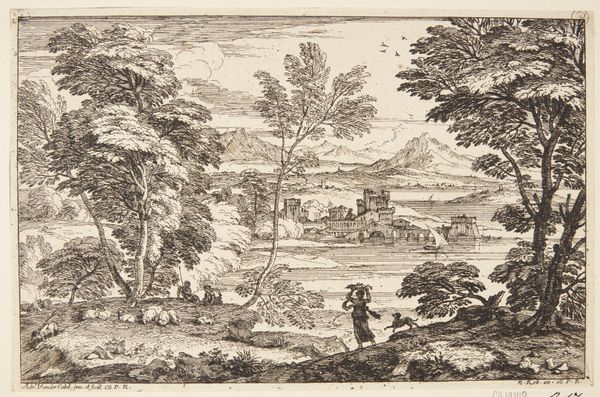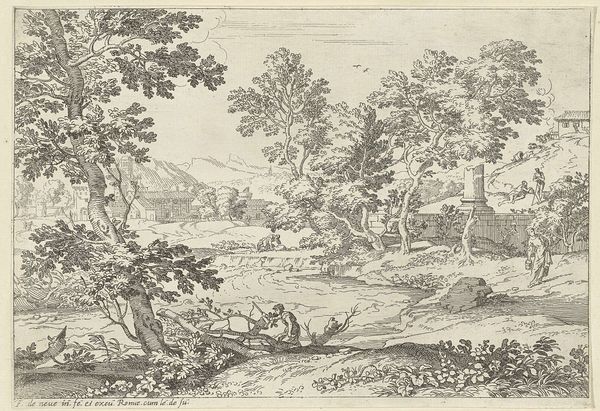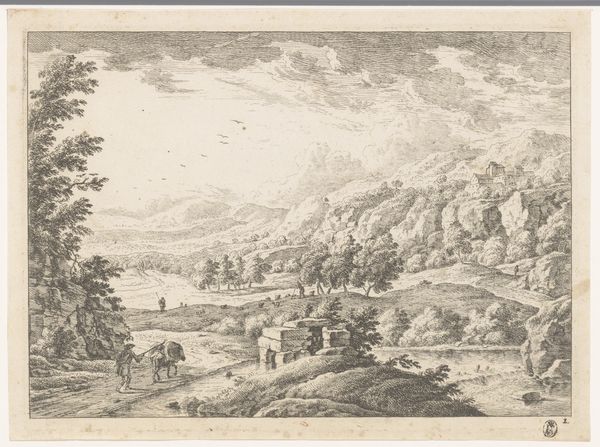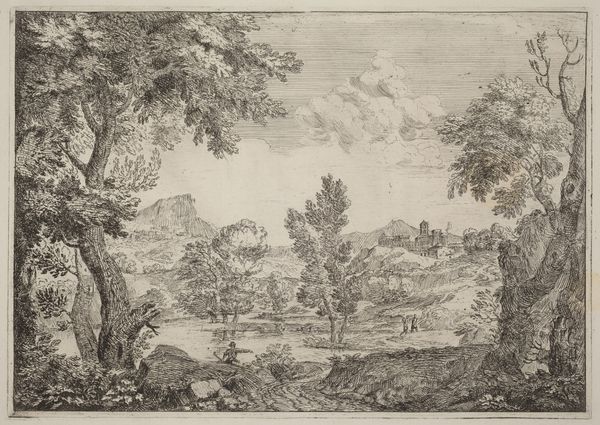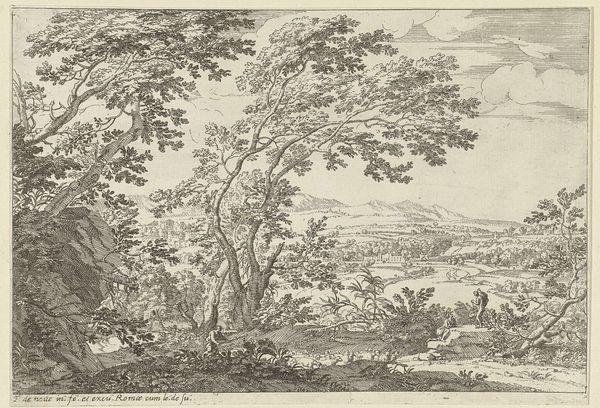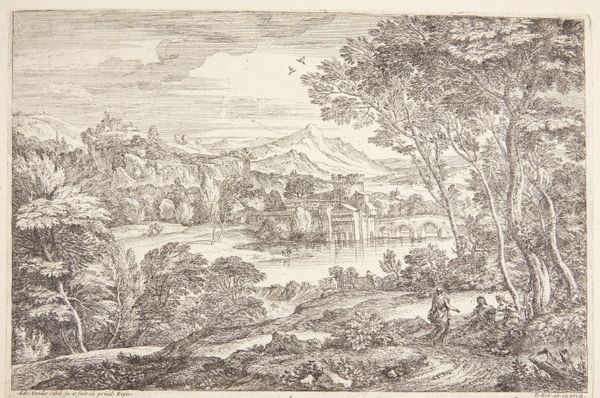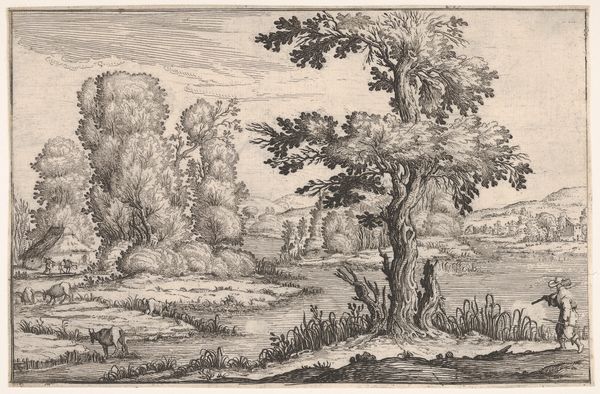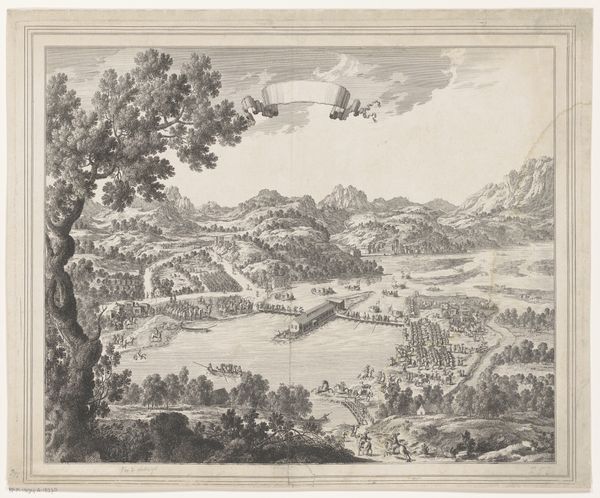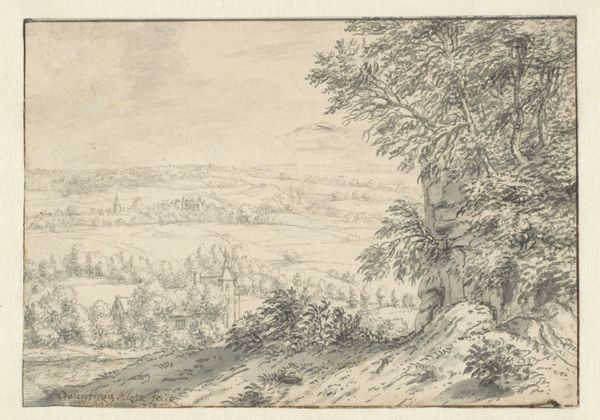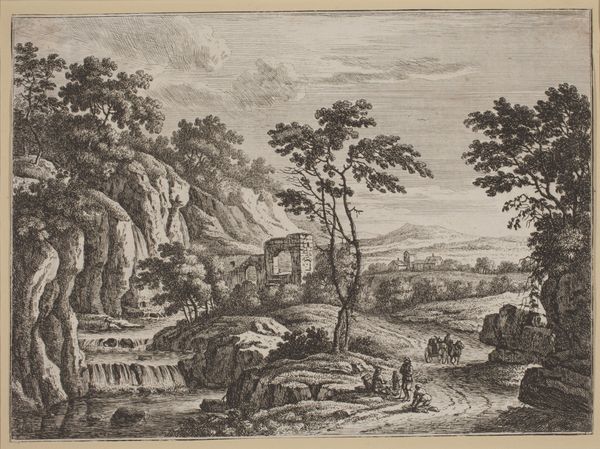
print, etching, intaglio, engraving
#
ink drawing
# print
#
etching
#
intaglio
#
landscape
#
mannerism
#
history-painting
#
northern-renaissance
#
engraving
Dimensions: sheet: 22 × 30.8 cm (8 11/16 × 12 1/8 in.) mount: 30.7 × 38.9 cm (12 1/16 × 15 5/16 in.)
Copyright: National Gallery of Art: CC0 1.0
Curator: This is "Cephalus and Procris," an intaglio print made around 1558 by Hieronymus Cock. Editor: The landscape is truly breathtaking, almost dreamlike in its rendering, yet there is something decidedly melancholic about this idyllic scene. The details are so precise yet feel slightly unsettling. Curator: Indeed. Cock masterfully manipulates light and shadow through the intaglio process. Notice how he employs cross-hatching to create depth, drawing our eye across the vast landscape towards the distant cities. This technique not only defines form but also evokes an almost palpable sense of atmosphere. Editor: It’s interesting how the landscape dominates the mythological narrative. I'm struck by how the setting, filled with meticulously detailed flora and distant architectural structures, overshadows the drama unfolding between Cephalus and Procris in the lower corner. Does this prioritize the landscape and diminish the overt narrative drama of the Ovidian tale, perhaps reflecting a changing worldview? Curator: The relationship between foreground and background becomes central. We see an increasing interest during the Renaissance of locating the drama of mythology in a complex engagement with nature. Furthermore, the scale helps render humans fragile. Look, for instance, how Cock manages texture. The dense foliage contrasts sharply with the smooth expanse of the water, a testament to his technical skill with the burin. It calls attention to its artifice. Editor: This emphasis feels very relevant given how art served to portray status. Such elaborate details speak of privilege and a keen interest in displaying earthly possessions as reflections of personal taste, especially the landscape itself as something that can be surveyed and owned. How were such printed images regarded during that era? Were these items largely consumed within noble residences or also by the merchant classes? Curator: These prints, with their relatively reproducible medium of engraving and etching, undoubtedly found audiences among a broader section of society, helping disseminate mythological themes and aesthetic sensibilities beyond just the wealthy elites. Editor: Ultimately, I'm left contemplating how social standing becomes intimately entwined with aesthetics. Curator: Yes, the image highlights how our very sense of self can be shaped by visual experiences.
Comments
No comments
Be the first to comment and join the conversation on the ultimate creative platform.

